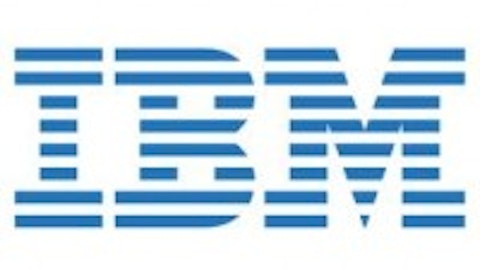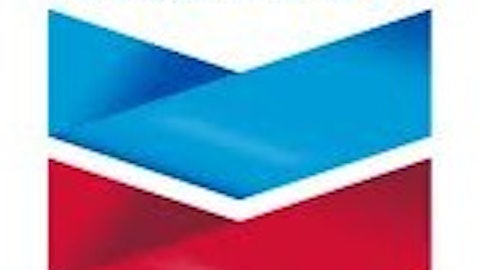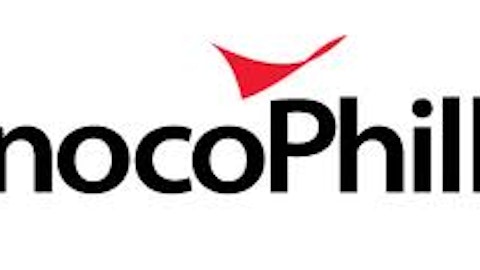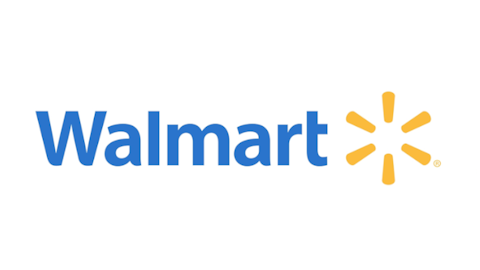ConocoPhillips (NYSE:COP) has reported results for the fourth quarter of 2012 and the full year, and this gives us the opportunity to evaluate the company as a pure up stream play after it spun off its downstream operations as Phillips 66 (NYSE:PSX). The focus of this article will be on the performance of the company without the cushion of downstream earnings in a year when refining margins were strong because of relatively cheap crude oil prices.
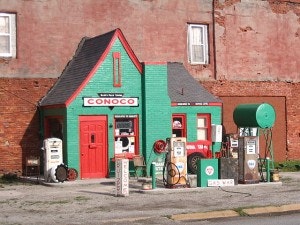
Fourth Quarter Highlights
ConocoPhillips (NYSE:COP) reported earnings of $1.4 billion, or $1.16 per share for the fourth quarter of 2012, compared to earnings of $3.4 billion, or $2.56 per share in the same quarter of the previous year. Fourth quarter 2011 earnings included results from downstream operations prior to the spinoff of Phillips 66 on April 30, 2012.
Exclusive of special items, fourth quarter adjusted earnings were $1.8 billion, or $1.43 per share, in comparison to adjusted earnings of $2.1 billion, or $1.55 per share year over year. Following recently concluded agreements to dispose of the company’s interests in the Kashagan Field, as well as the Algeria and Nigeria business units, the associated earnings and production for these assets have been shown as discontinued operations. As a result, adjusted earnings for the fourth quarter declined by $27 million, or $0.02 per share.
2012 Highlights
Full year 2012 earnings were $8.4 billion, or $6.72 per share, compared to full-year 2011 earnings of $12.4 billion, or $8.97 per share. The earnings for 2012 and 2011 included four months and 12 months of downstream operations respectively. Full-year 2012 adjusted earnings were $6.7 billion, or $5.37 per share, compared to adjusted earnings for 2011 of $8.0 billion, or $5.75 per share.
At the end of 2012, preliminary proved reserves are 8.6 billion barrels of oil equivalent (BOE). Proved organic reserve additions for the year are projected to be 942 million BOE, which represents an organic reserve replacement ratio of 156% of production during the year, including fuel gas. Sales for 2012, net of purchases, amounted to 83 million BOE representing a total reserve replacement ratio of 142%.
Cash generated from continuing operating activities for the quarter was $3.87 billion. Excluding an increase in working capital of $0.37 billion, the company generated $4.24 billion in cash from operations. Of this, $3.6 billion was used on capital expenditures and $0.8 billion on dividend payments. During the fourth quarter, debt rose by $0.6 billion because of the placement of $2 billion in low-interest debt. As of Dec. 31, 2012, the company held debt of $21.7 billion and the debt-to-capital ratio was 31%. The company had $3.62 billion of cash and cash equivalents and $0.75 billion in restricted cash reserved for dividends.
Future spending
ConocoPhillips (NYSE:COP) is aiming to use cash, debt and asset sales to fund future capital expenditure and dividends until production increases as a result of its investments. It expects capital expenditure of about $16 billion a year from 2013 to 2017, and spent more than $3 billion last year on its dividend with the intention of paying consistent dividend increases. In 2013, the company expects to generate $9.6 billion from asset sales, which it has already announced. Continuing operations generated a little less than $15 billion in cash flow last year, and the company’s investments will create $6 billion to $7 billion of cash flow in the future, so that cash flow may be around $22 billion by 2017 at current energy prices.
Peers
Hess Corp. (NYSE:HES) will exit its retail, energy marketing, and energy trading businesses following pressure from an activist investor to break up the company. The company is an operator of terminals and retail gasoline stations, most of which incorporate convenience stores on the East Coast of the U.S. The company also said it would buy back up to $4 billion of its stock and increase its annual dividend to $1 from $0.40 starting in July.
Hedge fund Elliott Management, the third-largest shareholder in the company with a stake of 4%, has asked the company, which is aiming at becoming a predominantly exploration and production company, to look at a spinoff of its U.S. onshore assets and the sale of its retail operations. Elliott also plans to nominate five directors on the board of directors at the next annual general meeting. Hess Corp. (NYSE:HES) has been trying to sell non-core assets and invest more than 90% of its capital into exploration and production. It is also pursuing monetization of its gathering and transportation assets in the Bakken shale field, which is expected in 2015. The company’s management has often been accused of not generating enough value for shareholders, and these moves should unlock some of the hidden values. I recommending buying shares of Hess Corp. (NYSE:HES).
Chevron Corporation (NYSE:CVX) has both upstream and downstream operations, which makes it more diversified than most oil companies that have been spinning off their downstream operations. Chevron Corporation (NYSE:CVX) has sensibly stayed with refineries, going against the trend and strong downstream results have provided a cushion for the downturn in upstream operations. In keeping with the diversification strategy, the company also conducts natural gas and alternative energy operations. This is important because investors see Chevron as an oil company when it is actually much more. As a result, the company is poised to be successful no matter which way the energy market develops. For example, if alternative energy becomes a major energy source in the future, then Chevron is positioned to become a frontrunner. It proposes to build a solar thermal demonstration project in Hawaii by 2014 in an effort to control spiraling costs. Also, Ukraine now wants to enter into a shale-gas production-sharing deal with Chevron to reduce its energy reliance on Russia. The company has strong operating margins, a sound balance sheet and good growth. It provides a nice dividend yield and is relatively cheap because it trades at 8 times earnings. It is also positioned for future growth no matter which way the energy market develops. I think investors should also consider buying Chevron Corporation (NYSE:CVX).
Conclusion
ConocoPhillip’s stock sells for roughly five times operating cash flow (OCF). This is a discount compared to other major oil companies, such as Exxon Mobil Corporation (NYSE:XOM), which sells for 7.5 times OCF, or Chevron Corporation (NYSE:CVX), sitting at 6.5 times OCF (though I still recommend buying Chevron). The company also pays a higher dividend than these two. Though revenues fell in 2012 because of the spinoff of Phillips 66 last year, revenues are expected to grow by about 10% in 2014. This makes ConocoPhillips (NYSE:COP) a stock worth buying.
The article ConocoPhillips: Buy, Sell or Hold? originally appeared on Fool.com and is written by Max Fisher.
Copyright © 1995 – 2013 The Motley Fool, LLC. All rights reserved. The Motley Fool has a disclosure policy.
